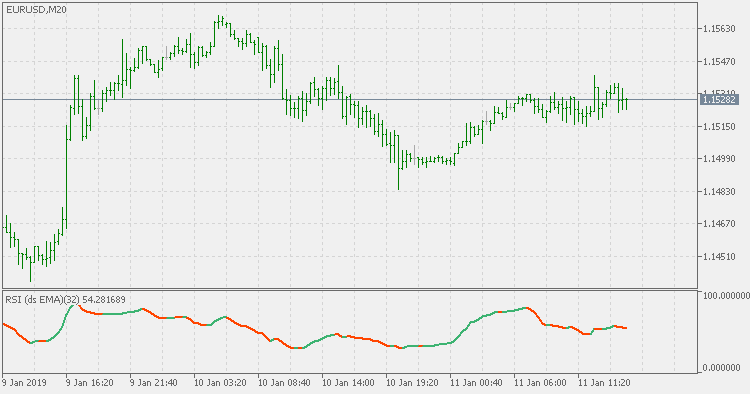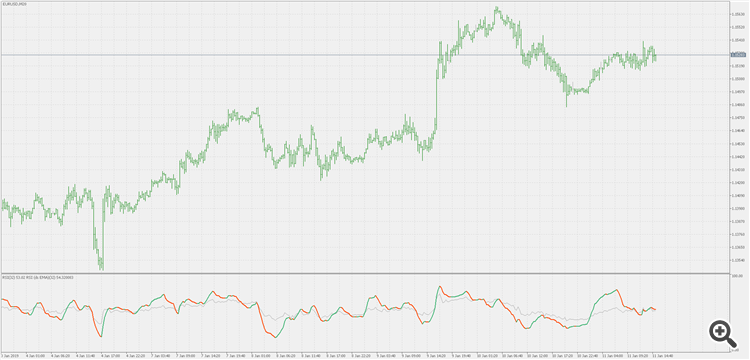Fan sayfamıza katılın
Öyleyse bir link gönderin -
başkalarının da faydalanmasını sağlayın
- Görüntülemeler:
- 7663
- Derecelendirme:
- Yayınlandı:
- 2019.01.11 14:29
-
Bu koda dayalı bir robota veya göstergeye mi ihtiyacınız var? Freelance üzerinden sipariş edin Freelance'e git
Theory :
In the original RSI calculation Welles Wilder is using the "Wilder EMA" (some explanation of it can be found here : Double Smoothed Wilder's EMA). He never explained exactly why he was that EMA but we can guess that he was trying to reduce the number of signals for RSI (if he was to use the "regular" EMA the number of signals would be significantly bigger since EMA would make even more "nervous" RSI). This version is addressing that issue and implicitly addressing the issue of RSI flattening (when RSI becomes flat for longer periods). Instead of using "regular" Wilder's EMA for calculation, this version is using double smoothed Wilder's EMA, and that way :
- it is smoothing a bit the RSI (not too much, but the smoothness difference is noticeable and significant in a lot of cases)
- it is preventing too much flattening of the RSI (see the lower "big picture" example)
 Simple Server Clock
Simple Server Clock
A very simple, efficient and non-obtrusive clock for your Chart. KISS compliant! :)
 Double smoothed Wilders EMA
Double smoothed Wilders EMA
Double smoothed Wilders EMA
 RSI of average using double smoothed Wilder's EMA
RSI of average using double smoothed Wilder's EMA
RSI of average using double smoothed Wilder's EMA
 Symbol Name On Chart
Symbol Name On Chart
Pretty simple. Seems Stupid. But yes, You need this...

